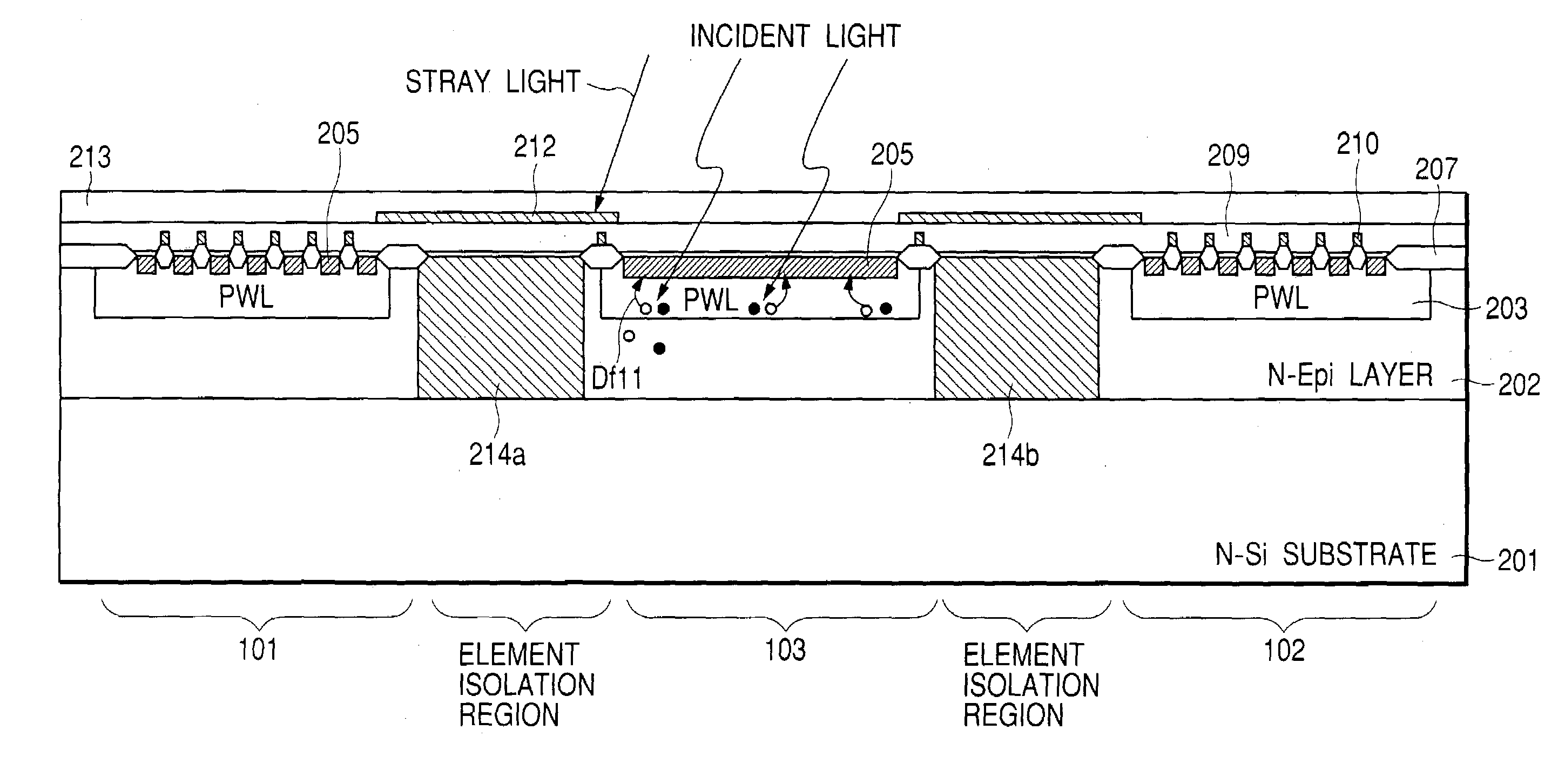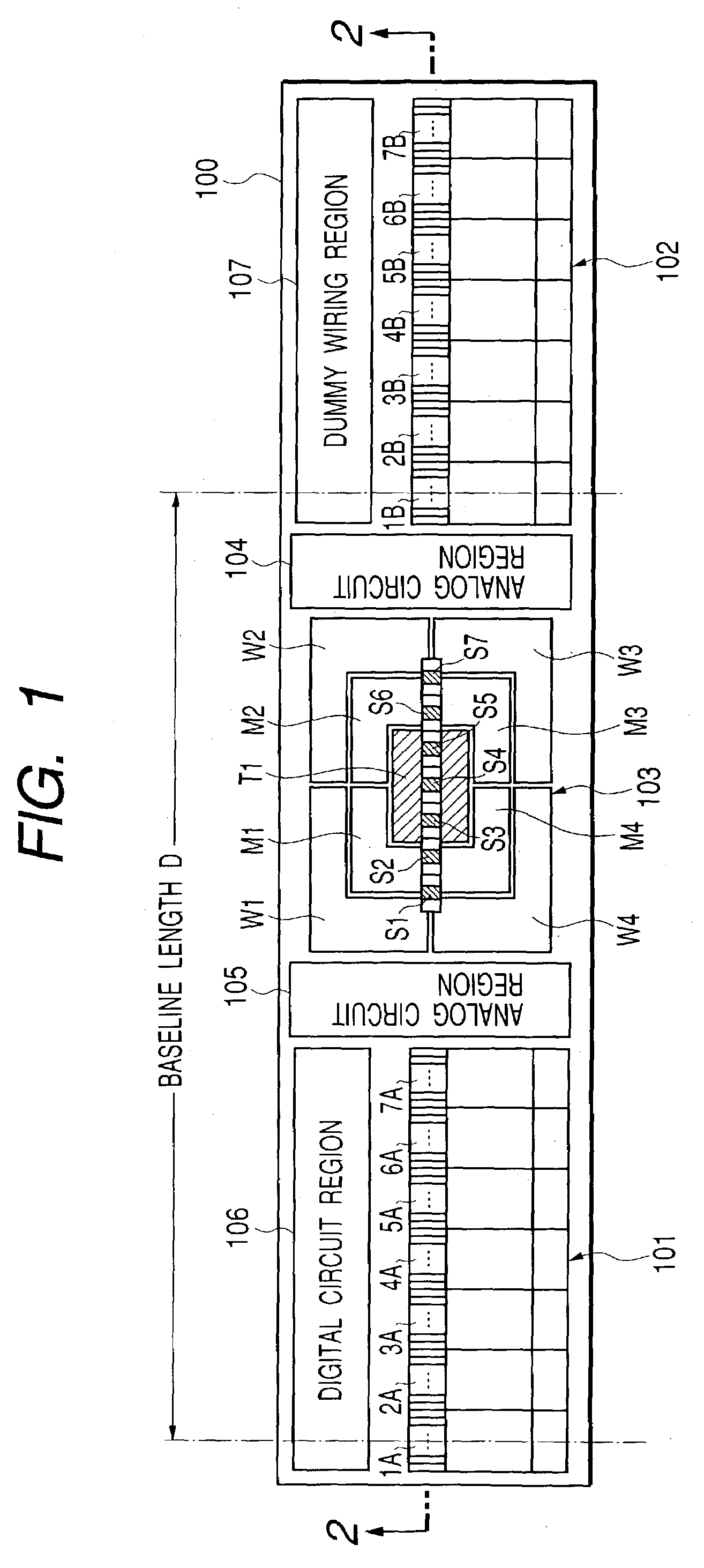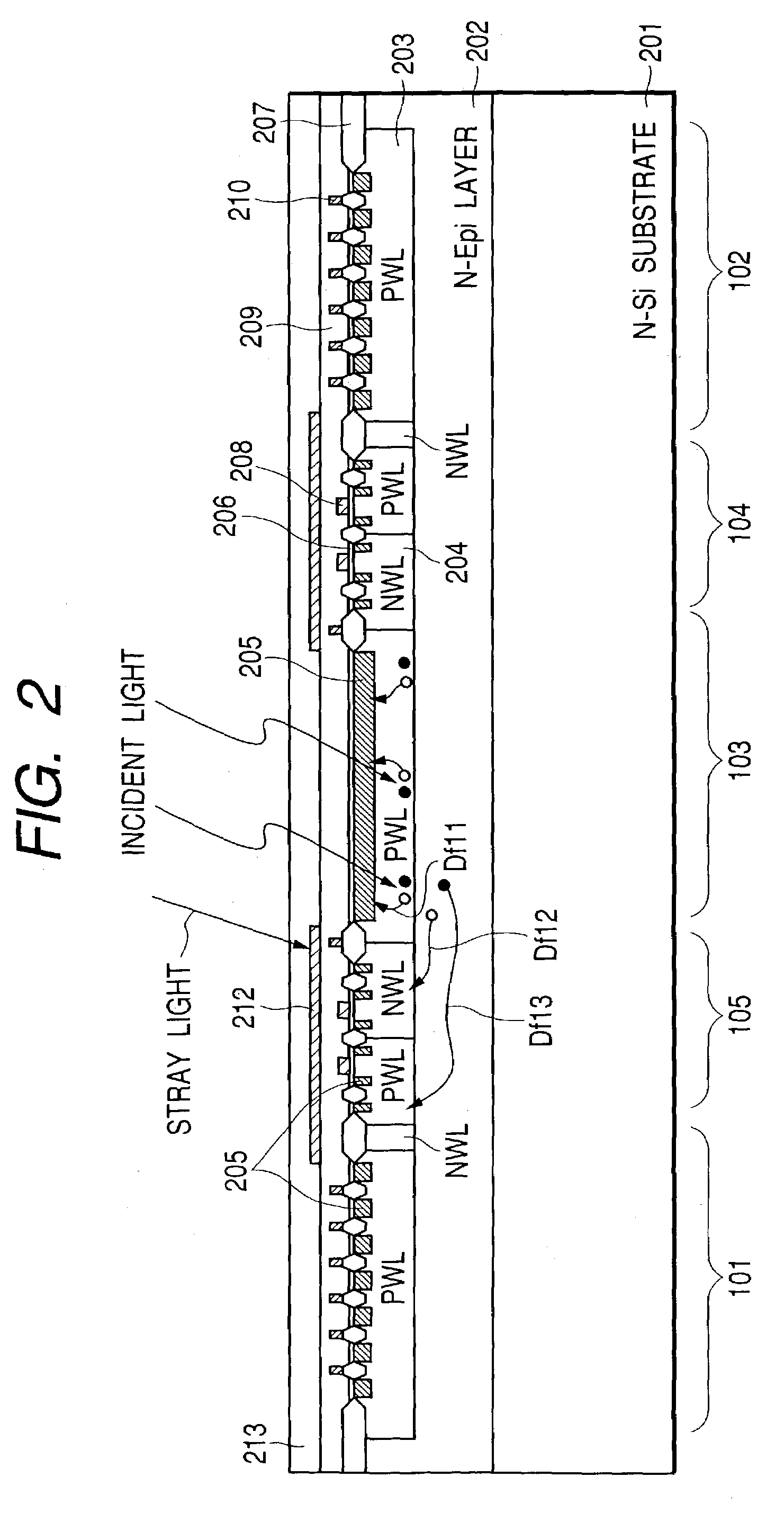Solid state image pickup device
a solid-state image and pickup device technology, applied in the direction of printers, optical radiation measurement, camera focusing arrangement, etc., can solve the problems of poor planarization precision, lowered precision of chemical mechanical polishing (cmp) planarization process among cmos manufacture processes, irregular densities of wiring patterns, etc., to improve the accuracy of photometry and range finding, reduce and suppress the incidence of stray ligh
- Summary
- Abstract
- Description
- Claims
- Application Information
AI Technical Summary
Benefits of technology
Problems solved by technology
Method used
Image
Examples
first embodiment
(First Embodiment)
[0028]FIG. 1 is a diagram showing a plan layout of a solid state image pickup device according to a first embodiment of the invention. FIG. 2 is a cross sectional view of the solid state image pickup device taken along line 2—2 in FIG. 1. For the purposes of simplicity, the number of photodiodes of AF and AE sensors drawn in FIG. 1 is reduced. In the first embodiment, the solid state image pickup device is manufactured by using an n-type Si substrate and CMOS processes for a twin well structure of PWL and NWL.
[0029]In FIGS. 1 and 2, reference numeral 100 represents a Si semiconductor substrate (corresponding to an n-type Si substrate 201 shown in FIG. 2), 101 and 102 represent AF sensor regions, 103 represents an AE sensor region, 104 and 105 represent analog circuit regions, 106 represents a digital circuit region and 107 represents a dummy wiring pattern region. In FIG. 2, reference numeral 201 represents the n-type Si substrate, 202 represents an n-type epitaxia...
second embodiment
(Second Embodiment)
[0051]FIG. 6 is a diagram showing a plan layout of a solid state image pickup device according to a second embodiment of the invention, and FIG. 7 is a cross sectional view of the solid state image pickup device of the second embodiment. In FIGS. 6 and 7, reference symbol 100a represents an Si semiconductor substrate, 214a and 214b represent n+-type diffusion regions, and 212a and 212b represent light shielding layers. Reference numeral 215 represents an AF sensor circuit in the AF sensor region 101. In this embodiment, high impurity concentration regions (n-type element isolation regions) 214a and 214b of the same conductivity type as that of the substrate are disposed between the AF sensor regions 101 and 102 and the AE sensor region 103 in order to further reduce crosstalks between the AE and AF sensor regions. The crosstalk reduction effects of the second embodiment are better than those of the first embodiment. However, analog circuits are required to be form...
third embodiment
(Third Embodiment)
[0052]FIG. 8 is a diagram showing a plan layout of a solid state image pickup device according to a third embodiment of the invention. In FIG. 8, reference numeral 215 represents an n+-type buried layer. This embodiment is characterized in that the wells of the AE sensor region 103 and AF sensor regions 101 and 102 are perfectly separated by the n+-type high impurity concentration layer 214 and n+-type buried layer 215. Although the burying process is necessary, this embodiment is effective for reducing crosstalks by all means.
[0053]As shown in FIG. 9, instead of an n-type Si substrate, a p-type substrate may also be used with similar expected effects.
PUM
 Login to View More
Login to View More Abstract
Description
Claims
Application Information
 Login to View More
Login to View More - R&D
- Intellectual Property
- Life Sciences
- Materials
- Tech Scout
- Unparalleled Data Quality
- Higher Quality Content
- 60% Fewer Hallucinations
Browse by: Latest US Patents, China's latest patents, Technical Efficacy Thesaurus, Application Domain, Technology Topic, Popular Technical Reports.
© 2025 PatSnap. All rights reserved.Legal|Privacy policy|Modern Slavery Act Transparency Statement|Sitemap|About US| Contact US: help@patsnap.com



